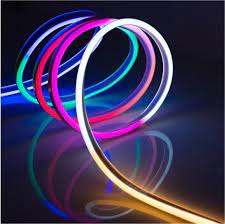Release time:Mar 08,2024View:85682
DMX (Digital Multiplex) LED strips work by using the DMX protocol to control the lighting effects of the LED strips. Here's how it generally works:

DMX Protocol: DMX is a digital communication protocol widely used in the entertainment industry for controlling stage lighting and effects. It allows for precise control over lighting fixtures, including LED strips, by sending digital signals over a standard DMX cable or via wireless DMX transmitters.
DMX Controller: A DMX controller is used to send DMX signals to the LED strips. This controller can be a dedicated hardware device or software running on a computer or mobile device. The controller typically allows the user to program lighting scenes, control brightness, color, and various effects.
DMX Decoder/Driver: LED strips compatible with DMX require a DMX decoder or driver to interpret the DMX signals and control the LEDs accordingly. The decoder is connected between the DMX controller and the LED strips. It receives the DMX signals and converts them into control signals understood by the LED strips.
LED Strip: The LED strip itself contains individual LEDs that can be controlled independently or in groups depending on the type of strip. The DMX decoder communicates with the LED strip to adjust the color, intensity, and other parameters of the lighting.
Addressing: In a DMX system, each lighting fixture, including LED strips, is assigned a unique address. This address determines which fixture receives which commands from the DMX controller. Addressing ensures that multiple fixtures can be controlled independently within the same DMX network.
Control: Once the DMX controller is programmed with the desired lighting scenes and effects, it sends DMX signals to the DMX decoder, which then translates these signals into instructions for the LED strips. The LED strips respond accordingly, producing the programmed lighting effects.
DMX LED strips are commonly used in stage lighting, architectural lighting, and other applications where precise control over lighting effects is required. They offer flexibility, scalability, and the ability to create dynamic and intricate lighting designs.
Shenzhen, China 518103

